
It is still unreal that Full Aviation Geek Fest Seattle (AGF) tickets sold out in less than 30 seconds. We know that there are many of you who were hoping to get tickets and weren’t able to get them. That bites and we are sorry – blame it on the old rule of “supply and demand.” There were also some technical issues that popped up because of the overwhelming demand that didn’t make things any easier. Again, we apologize. We are looking how to improve the process in the future (and hopefully allow more people to enjoy this epic event), but for now, we still have AGF15 to look forward to!
The sale of Mini Tickets has now closed
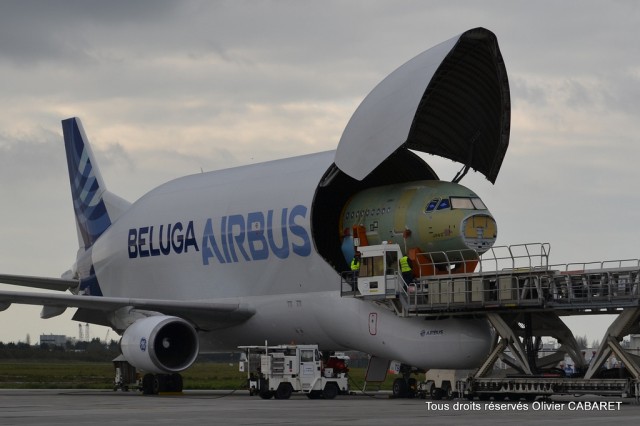
Out comes the nose section of an A320 aircraft from an Airbus A300-600 Beluga “Supertransporter” – Photo: Olivier CABARET | Flickr CC
This is an excerpt from Paul Thompson’s story on NYCAviation.com…
Throughout Airbus’ first two decades in business, its competitors at Boeing would joke that ’œEvery Airbus is delivered on the wings of a Boeing.’ That statement was both accurate and fair, being that Airbus had to use modified Boeing Stratocruisers known as Super Guppies. Yes, Airbus was transporting parts for its own jets inside 1940s-era planes built by its only real competitor.
As time progressed, Airbus finally resolved the issue by designing its own transport based on one of their own planes ’“ the A300 twin-engine jet.
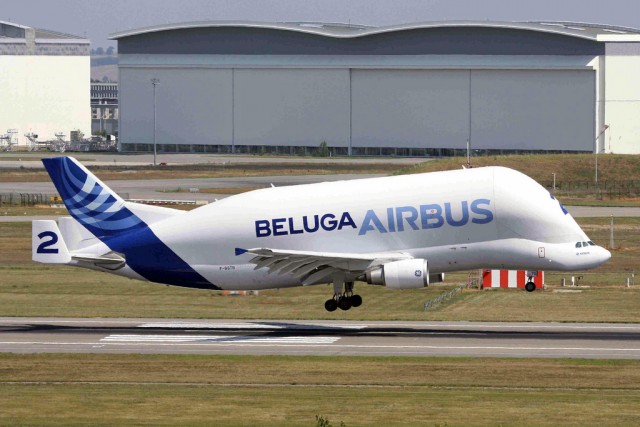
A Beluga in the air looks almost like a Beluga whale out of water – Photo: Ken Fielding
The resulting A300-600ST (ST for Super Transporter) became commonly known as ’œThe Beluga’ for its bubble-like forehead resembling the Beluga whale. To accomplish the plane that seems to defy every law of aerodynamics, Airbus employed some major structural changes.
BONUS: Super Guppy Delivers Space Shuttle Trainer to the Museum of Flight
Starting at the nose, Airbus lowered the cockpit below the cargo deck so that the cargo area could be loaded without having to disconnect any of the vital electric and hydraulic lines running to the rest of the plane. The design kept the A300’s lower fuselage, wings and landing gears, but added a cavernous cargo area on top.
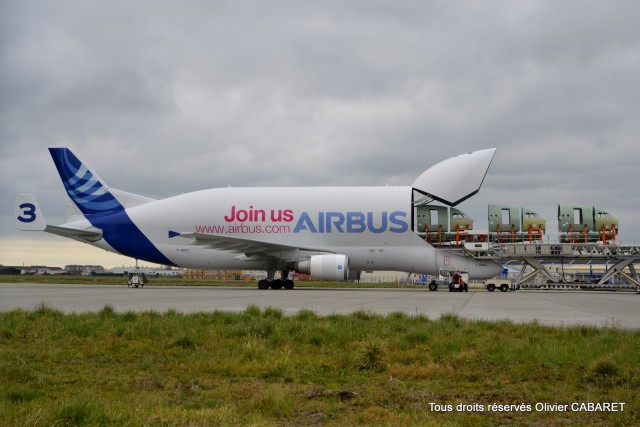
A320 noses are unloaded from the Beluga – Photo: Olivier CABARET | Flickr CC
At 49,440 cubic feet, the Beluga’s cargo volume ranks second between Boeing’s 747-LCF Dreamlifter (65,000 cubic feet) and the Antonov An-225 (45,909 cubic feet). The Beluga is hampered by its weight lifting capability, which is only 47 tons (103,617 pounds) or roughly the weight of an empty 737. Its cargo bay measures 25 feet in diameter. The Beluga has a maximum takeoff weight of just over 341,000 pounds, while the Dreamlifter tops out at 803,000 pounds.
BONUS: Antonov AN-225 Photo Tour
In comparison, the 747-8 freighter is capable of lifting over one million pounds, and the An-225 can lift over 1.4 million pounds. The Beluga is also incapable of hauling sections of the A380 due to its size. Those parts are still taken by barge or road convoy to the A380’s final assembly location in Toulouse.
Continue reading On the Wings of Giants: Airbus Banks on the Beluga on NYCAviation.com
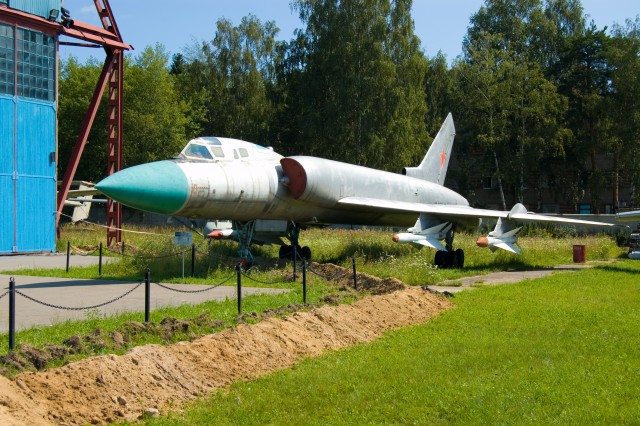
A Tu-128 at the Central Aviation Museum of Russia – Photo: Maarten Dirkse
Before I get into the aircraft I want to discuss today, there is an important matter of Soviet Military organization that I see misconstrued often. During the Soviet times, the VVS (Voyenno-Vozdushnye Sily or Military Air Force) was not responsible for matters of air defense.
This was the auspice of the PVO, sometimes also abbreviated as V-PVO (or sometimes PVO strany). PVO is a Russian abbreviation that literal translates to anti-air defense; strany is Russian for country (sometimes nation). So PVO strany was responsible for the anti-air defense of the nation. They were considered the third-most important branch of the Soviet Armed Forces (behind the RVSN and Ground Forces). While the PVO was merged into the VVS in 1998, their legacy lives on; Air Defense Day is celebrated on the second Sunday of every April.
This, if it was not obvious yet, is a story about an aircraft that served with the PVO. Some would say, the most unusual of them as well.
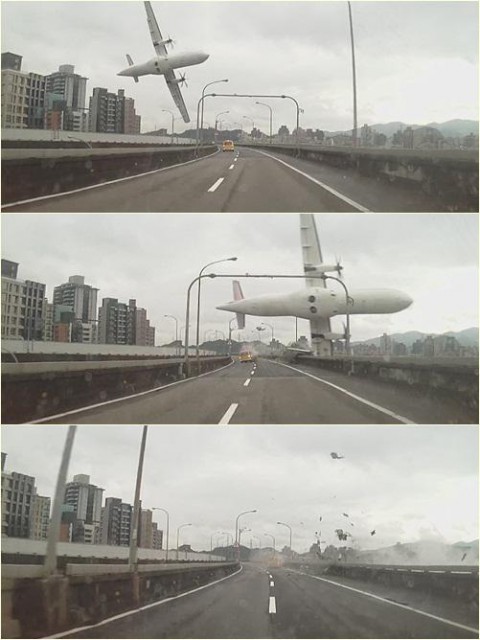
A TransAsia ATR crashes – Photo: @Missxoxo168
UPDATE 2/4/15 7:00AM PST: The Associated Press is reporting that the death toll from the accident has risen to 25, with 18 people still unaccounted for. Per civil aviation authorities in Taiwan, the pilot had logged nearly 5,000 flight hours. The cockpit voice recorder and flight data recorder (“Black Boxes”) have been recovered, which should assist authorities in determining the cause(s) of the crash.
ORIGINAL STORY:
TransAsia Flight 235 (GE235), an ATR72-600, has crashed during takeoff while en route from Taipei Sung Shan (TSA) to Kinmen Shang-Yi Airport (KNH), in the Fujian Province. The aircraft, reg# B-22816, was only 10 months old at the time of the crash.
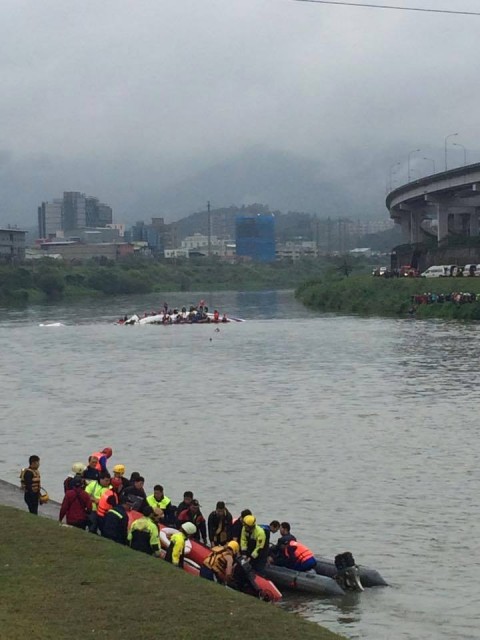
Rescuers and passengers can be seen on the bank with the TransAsia ATR72 in the background – Photo: Yung Jen
Video and photos show the aircraft at a steep angle flying over an overpass and then into the Keelung River. At the time of this update, there have been three reported passenger deaths with another few injured.
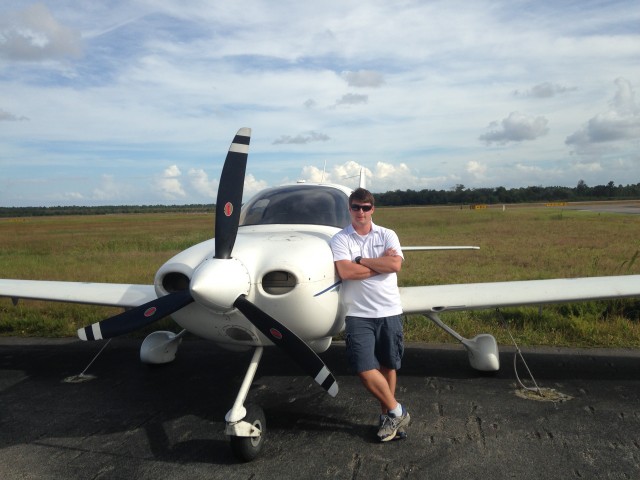
Getting ready to fly – Photo: Zachary Azzarito
College, as they say, is the best four years of your life. You make life-long friends, discover what career you want to pursue, and obtain valuable leadership skills and experience through clubs and organizations. More often than not, it’s your first time out on your own. About the only thing that makes it better is when some of your classes are taught in a cockpit.
Flying is one of the greatest experiences I’ve ever had, and the single best major out there in my opinion. Most students study in the classroom, learning the material from books and real-world examples. However, it’s not often that you get hands-on experience; maybe for a semester or two during an internship. For aviation students, we get to do it every semester, several times a week. The airport becomes as familiar as our classroom.
So where did it all start for me? I grew up in the Tallahassee, Florida area. There were several times when my dad would take me out to the airport and we would watch the planes take-off and land. So, ever since I was a young kid, flying has been an interest of mine. However, like a lot of kids, I wanted to be just about everything from a fireman, to a pilot, to a professional athlete.







